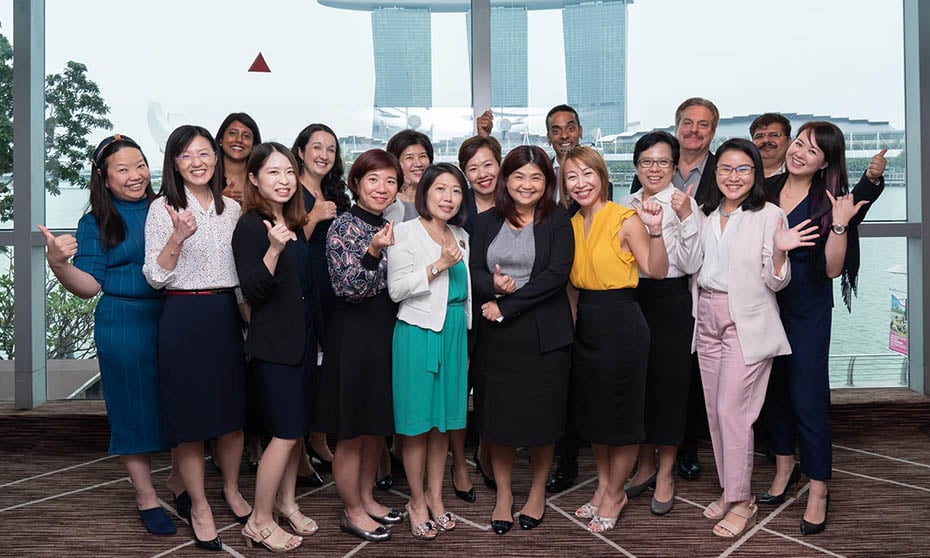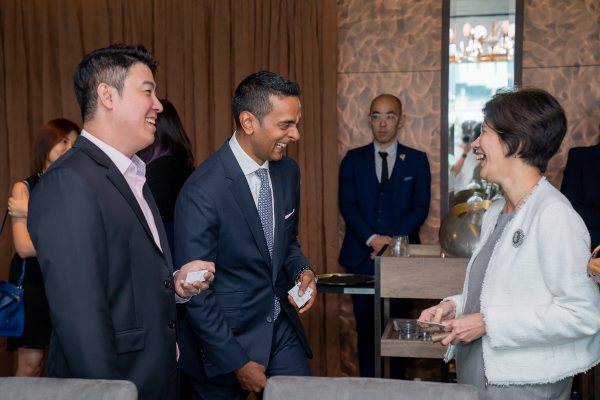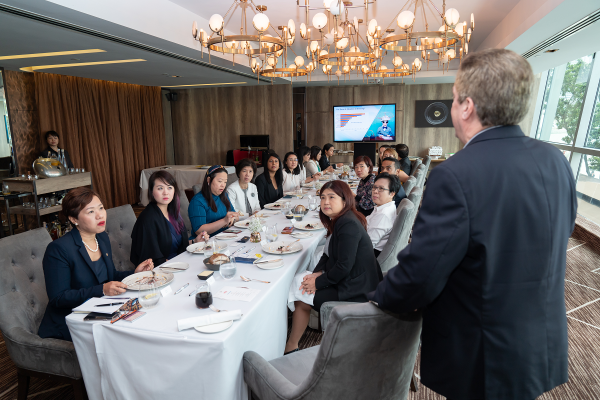
Are robots taking over our jobs? What’s our role in the future?

Studies estimate that by 2025, machines will perform more tasks than humans. What is our place in the future of work? How can leaders support their workforce?
Those were some of the topics discussed at an exclusive roundtable in Singapore recently, held jointly by HRD Asia and Cornerstone OnDemand.
Top HR leaders attended the session and shared insights on the impact of digital disruption on their workforces and how they’re preparing for the changing nature of work.
Mike Bollinger, Global VP of Thought Leadership and Advisory Services at Cornerstone OnDemand opened the roundtable by sharing some reported predictions around the future of work:
“It sounds a little scary in terms of what that capability means,” Bollinger said. “The speed…and the acceleration at which it’s occurring is getting faster and faster. How do you create soft and hard skills and adaptive skills because things are changing so quickly?
“At the same time, disruption is changing the world — technology disruption; merger and acquisition disruption; demographic disruption.
“The 100-year-life is a new disruptor — we have an ageing workforce that continues to work longer. But the talent shortage and skills gap are very pronounced for all of us.”

READ MORE: Future of work: Employees terrified of this new trend
He then quoted the World Economic Forum’s (WEF) recent Future of Jobs report on how the human-machine frontier will change in a work environment.
Today, an average of 71% of tasks across 12 industries are performed by humans, compared to 29% by machines. WEF’s report predicted that by 2022, artificial intelligence (AI) like machines and algorithms will on average increase their contribution to specific tasks by 57%.
However, as jobs get displaced, Bollinger reminded that “more jobs will be created than before”. This can lead to plenty of opportunities for HR to step up and fill the gaps felt by employees.
“As employees [and] as humans, we feel like we don’t have the necessary training and skills,” he said. “We feel the pace of change. We feel like automation is coming to take our jobs away.
“We’re not necessarily confident that our employer is going to help us with that, so that’s opportunity number one [for leaders] — to offer that reassurance that ‘I want to help you’.”

How HR can help fill ‘the gap’
Following Bollinger’s insights, several leaders shared how their organisations were working on creating a conducive environment for employees to transform.
READ MORE: What’s HR’s role in business transformation?
The head of learning at a global bank said that as it involves a culture change, it’s definitely “not an easy nut to crack”.
Efforts involve a massive shift in the organisation’s learning culture. Besides providing enabling technologies, it’s critical to ensure that ecosystems, processes and environments are conducive for organic, collaborative learning to take place.
The bank has experienced success in particular areas, but they continue to “attack it from all fronts”.
A VP of people development at a world-class aviation corporation agreed, saying that it’s “really a journey of changing mindsets”.
She believes that as much as technology or platforms can bring people to learn collaboratively, the most impactful sessions come out of real-time discussions and things like town hall participations.
And with any journey, facilitating a strong feedback loop is critical. To guide culture change in the right direction, she said that HR needs to encourage employees to “be courageous and open up” during those sessions.
She shared that her team has had to help employees overcome initial apprehension about providing feedback for a pilot training program. Some employees fear “being judged” for their comments.
Now, questions are shared organically, so the team continues to push on as they achieve “some success and some errors” throughout the journey.
For a CHRO at a healthcare institution in Singapore, change should start at the top because it’s best “you settle the leader before you settle the rest”. Securing a strong collaborative leadership is a crucial step in enabling and priming the rest of the organisation.
A regional HR director at a global pharmaceutical company added that it’s important to enhance the team’s ability to collaborate internally, across all levels.
This can create a continuous learning culture as you work with your team members day in and day out, with “every opportunity being the right opportunity to learn”. She acknowledged that getting “there is the tough part” but filling knowledge gaps first requires a culture and mindset change.
“One of the things to note is people are five times more likely to learn on their own,” Bollinger said. “So how do we create that collaborative environment [to enable a] very human…way to learn.
“As a human I want to feel like I’m growing. It doesn’t mean that I have to climb the career ladder, but I need to feel like I’m continuing to grow. If I feel like the world is going faster, I need to feel like I’m growing as well.”
